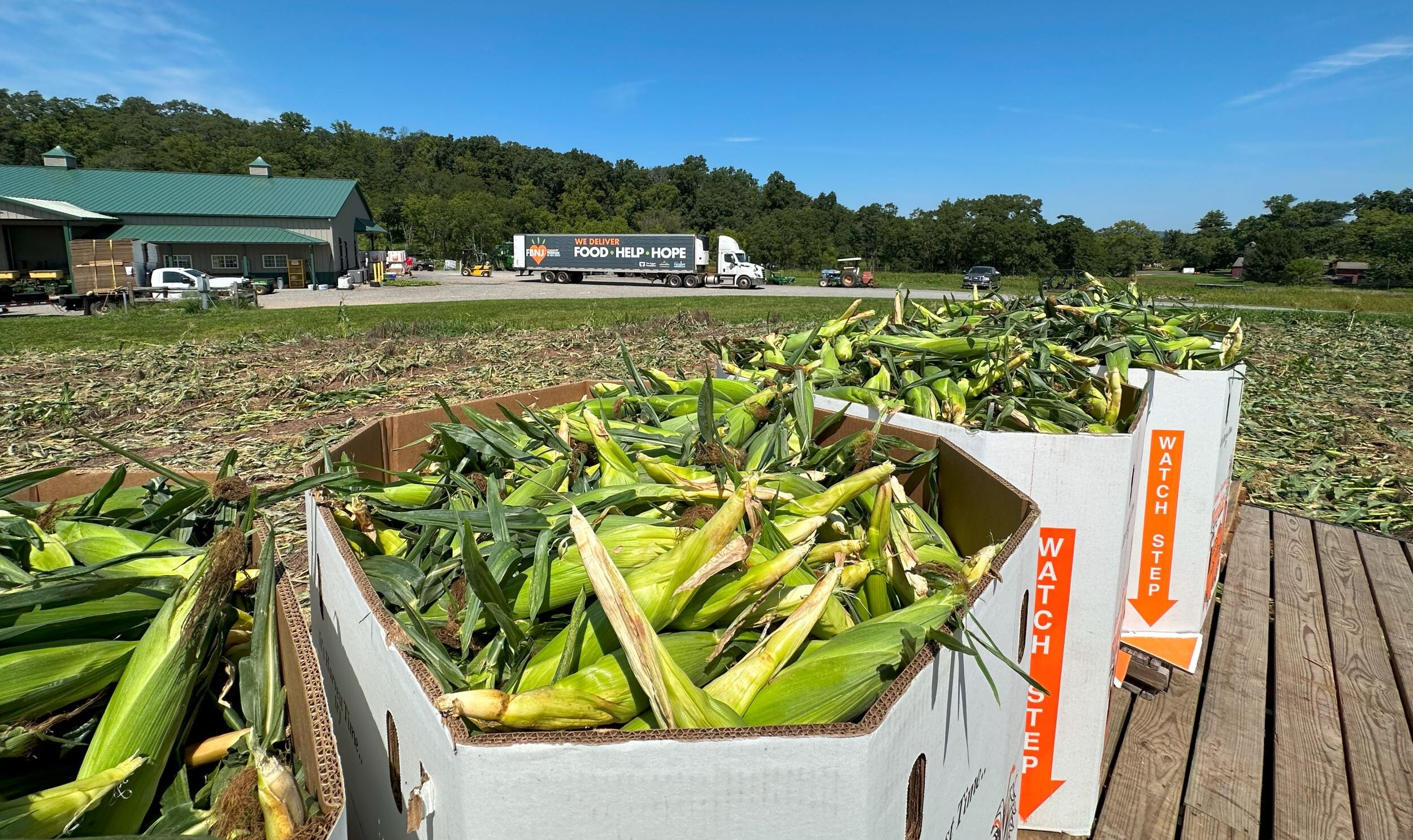By Tristan Wallack, Vice President of Programming & Operations
“Where is your produce going?” is a question we often receive out in the fields with our volunteers or when giving tours of the farm. The short answer: our produce reaches all counties in New Jersey plus 21 other states. The long answer: we rely on a national network of food banks and their partner agencies. I’ll explain more.
Feeding America is the largest domestic hunger relief nonprofit in the United States and the largest charity overall according to Forbes. Feeding America is a network of about 200 large food banks that have a presence in every county in the U.S. Think of the Feeding America food banks as massive food distribution centers that supply food to smaller hunger relief organizations such as food pantries, soup kitchens, and smaller food banks. These 200 large-scale food banks are currently serving around 60,000 smaller organizations, called partner agencies. Some Feeding America food banks are massive, like the Community FoodBank of New Jersey (CFBNJ), where I worked for many years. CFBNJ’s warehouse is the size of about six football fields and they distribute over 100 million pounds of food per year.
So, what is our role in the food banking system if the Feeding America network exists? Around 90% of our produce is given directly to Feeding America food banks then they distribute it to their partner agencies. The remaining produce we distribute goes directly to partner agencies of the Feeding America food banks. The agencies we serve are primarily in New Jersey, with a few in nearby eastern Pennsylvania.
I noted earlier that in addition to serving New Jersey, our produce is reaching 21 other states. You may wonder why we don’t keep everything in New Jersey since there is a great need locally. From a farming perspective, our growing season is only about 16 weeks, so in this short period of time, we need to distribute a large amount of produce (over 3.6 million pounds to be exact). The food bank system can only absorb so much food at a given pace due to capacity limitations such as transportation and refrigeration storage. It is important to understand that we are not the only donor to the food banks we work with, too—they are partnering with other farms, manufacturers, processors, distributors, wholesalers, and retailers. In addition, they often purchase food.
When the produce is ready to be harvested, our volunteer groups harvest the produce that’s ready to be picked, which happens daily during the season. Once it has been harvested, the clock is ticking as produce is perishable so when a food bank cannot accept our produce, we still need to find a home for it. Think of it like a domino effect: Once New Jersey has taken what it can that week, we expand our distribution footprint into New York City and Philadelphia. Once those areas are full, we start offering our produce to the entire Feeding America network. We will list extra loads of our produce on a platform Feeding America administers called MealConnect. Once our produce is listed, any Feeding America food bank across the country can choose to take it off our hands. This system ensures that our produce is going to where it is needed most—like the North Texas Food Bank and Food Bank of Central and Eastern North Carolina who both picked up cabbage last fall.

